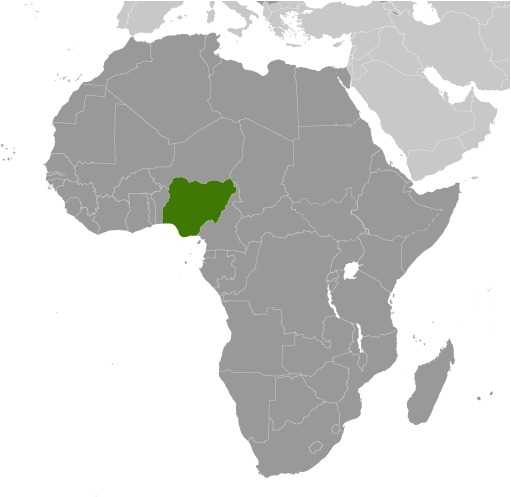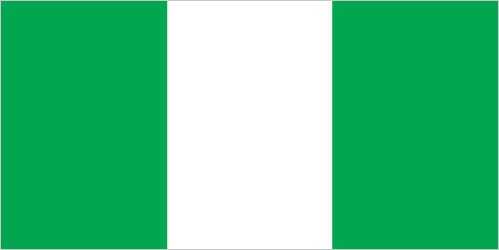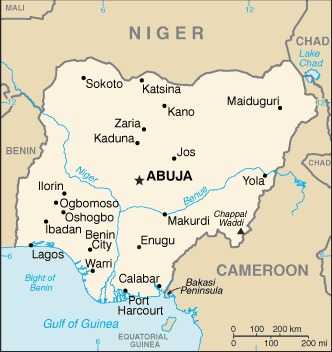Introduction
Background
Africa’s most populous country attained independence from Britain in 1960. Adoption of a new constitution in 1999 completed a peaceful transition to civilian rule. The government continues to face the daunting task of institutionalizing democracy and reforming a petroleum-based economy despite widespread corruption and crime.
Geography
Area
total : 923,768 sq km
land: 910,768 sq km
water: 13,000 sq km
Climate
varies; equatorial in south, tropical in center, arid in north
Natural resources
natural gas, petroleum, tin, iron ore, coal, limestone, niobium, lead, zinc, arable land
People and Society
Population
total: 236,747,130
Ethnic groups
Hausa 30%, Yoruba 15.5%, Igbo (Ibo) 15.2%, Fulani 6%, Tiv 2.4%, Kanuri/Beriberi 2.4%, Ibibio 1.8%, Ijaw/Izon 1.8%, other 24.9% (2018 est.)
Languages
English (official), Hausa, Yoruba, Igbo (Ibo), Fulani, over 500 additional indigenous languages
Religions
Muslim 53.5%, Roman Catholic 10.6%, other Christian 35.3%, other 0.6% (2018 est.)
Population growth rate
2.52% (2024 est.)
Government
Government type
federal presidential republic
Capital
name: Abuja
Executive branch
chief of state: President Bola Ahmed Adekunle TINUBU (since 29 May 2023)
head of government: President Bola Ahmed Adekunle TINUBU (since 29 May 2023)
Legislative branch
description: bicameral National Assembly consists of:
Senate (109 seats - 3 each for the 36 states and 1 for Abuja-Federal Capital Territory; members directly elected in single-seat constituencies by simple majority vote to serve 4-year terms)
House of Representatives (360 seats statutory, 258 current; members directly elected in single-seat constituencies by simple majority vote to serve 4-year terms)
Economy
Economic overview
largest African market economy; enormous but mostly lower middle income labor force; major oil exporter; key telecommunications and finance industries; susceptible to energy prices; regional leader in critical infrastructure; primarily agrarian employment
Real GDP (purchasing power parity)
$1.275 trillion (2023 est.)
$1.239 trillion (2022 est.)
$1.2 trillion (2021 est.)
Real GDP per capita
$5,700 (2023 est.)
$5,700 (2022 est.)
$5,600 (2021 est.)
Agricultural products
yams, cassava, maize, oil palm fruit, rice, taro, bananas, vegetables, sorghum, groundnuts (2022)
Industries
crude oil, coal, tin, columbite; rubber products, wood; hides and skins, textiles, cement and other construction materials, food products, footwear, chemicals, fertilizer, printing, ceramics, steel
Exports
$60.261 billion (2023 est.)
$69.091 billion (2022 est.)
$50.856 billion (2021 est.)
Exports - partners
Spain 13%, India 12%, France 7%, US 7%, Netherlands 6% (2022)
Exports - commodities
crude petroleum, natural gas, fertilizers, refined petroleum, gold (2022)
Imports
$72.251 billion (2023 est.)
$77.049 billion (2022 est.)
$67.478 billion (2021 est.)
Imports - partners
China 32%, Belgium 11%, Netherlands 10%, India 8%, US 5% (2022)
Imports - commodities
refined petroleum, wheat, garments, plastics, cars (2022)
Exchange rates
nairas (NGN) per US dollar -
Page last updated: Wednesday, July 24, 2024




